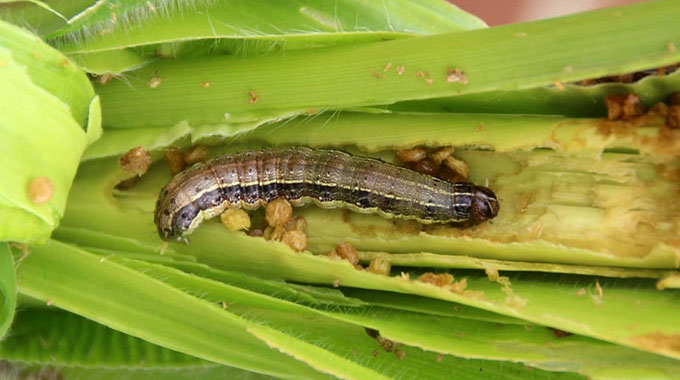An outbreak of the African armyworm (Spodoptera exempta) has been reported in Gauteng, Mpumalanga, and Limpopo, raising concerns among farmers and agricultural experts. According to Roger Price, research team manager at the Agricultural Research Council, and Dr. Godfrey Kgatle, research coordinator at Grain SA, the outbreak has been detected in Groblersdal (Limpopo), Carolina and Badplaas (Mpumalanga), and Pretoria North and Bronkhorstpruit (Gauteng).
The African armyworm primarily feeds on grasses but is also known to attack grains such as maize and millet. These infestations are carried into South Africa by winds from Central Africa, making the problem widespread rather than localized. The moths invade, lay eggs, and breed, but the population typically declines before winter.
While these outbreaks are sporadic, they are relatively common. The severity of an outbreak depends largely on the scale of infestations in Central Africa. This season, the infestation appears to be limited, but experts remain cautious as its spread remains uncertain. However, as temperatures drop, fewer reports of new infestations are expected.
Pastures are at the greatest risk, posing a significant threat to livestock farmers. When attacked by the African armyworm, kikuyu grass releases cyanide-like chemicals that can be toxic to cattle. In severe cases, entire pasturelands can be devastated, leading to potential livestock losses.
Managing these infestations presents challenges, particularly when it comes to chemical control. Price noted that spraying synthetic pyrethroid insecticides could be effective but is often not cost-efficient due to the vast areas affected. As a result, many farmers opt for natural population decline rather than large-scale chemical intervention.

For maize farmers, the impact of the African armyworm varies depending on the crop’s growth stage. According to Kgatle, crops beyond the tasselling stage are less vulnerable. However, if the infestation spreads to younger maize crops in other provinces, the threat could become more severe.
Farmers are urged to monitor their fields closely and report infestations promptly. While the immediate risk remains manageable, vigilance and early detection will be key in minimizing potential damage. Experts continue to assess the situation and advise on best practices for containment and mitigation.